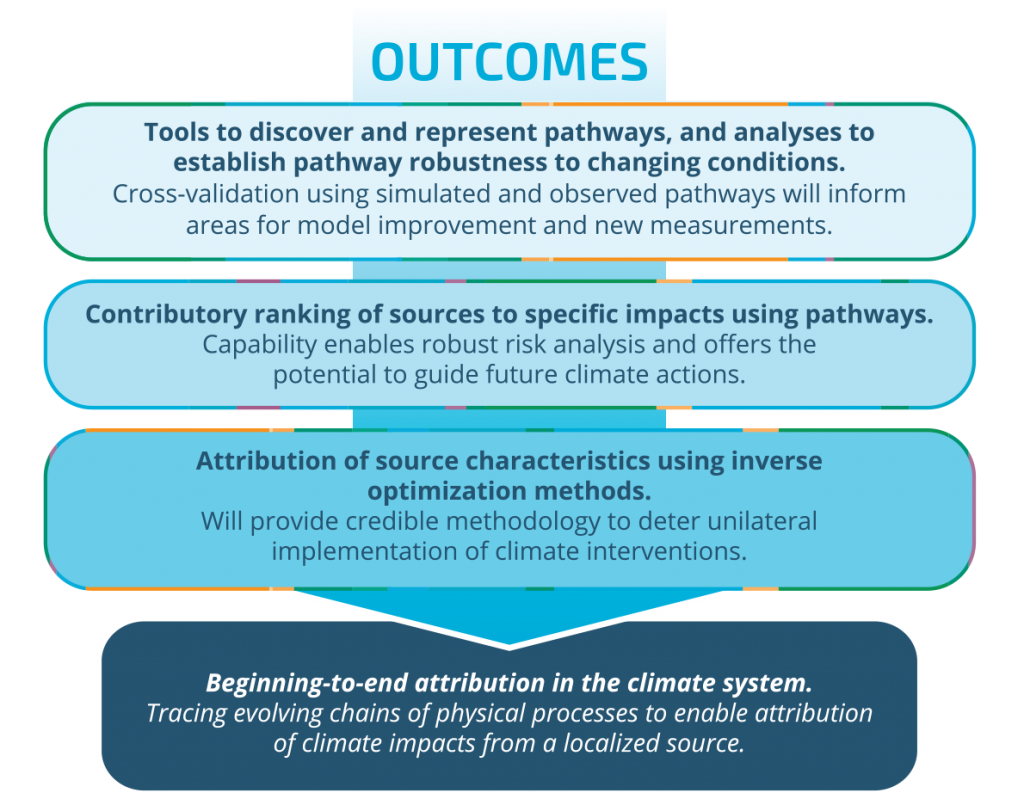CLimate impact: Determining Etiology thRough pAthways
Welcome to the CLDERA Grand Challenge Laboratory Directed Research & Development website. CLDERA is bringing together scientific, computational, and analytical expertise from nine distinct Sandia research centers and four academic partners — University of Illinois Urbana-Champaign, Texas A&M University, Columbia University, and University of Michigan — to advance climate attribution science.
About the CLDERA Grand Challenge
Climate events have broad economic, health, political, and national security ramifications. Discovery and quantification of the impact’s source are needed to guide policy decisions that may ameliorate or establish liability for undesirable impacts, as well as guide U.S. national security posture for impacts that may require a response. However, in highly-coupled complex, nonlinear systems, like the Earth’s climate, traditional understanding of causal relationships does not apply and many drivers may contribute to a detected change or impact.
CLDERA will advance climate attribution science by identifying downstream impacts arising from geographically and temporally localized source forcings in the climate, thus distinguishing itself from traditional climate attribution that strives to identify impacts of long-term greenhouse gases.
CLDERA will develop tools and methods that can distinguish how a localized source drives the climate system to respond with particular impacts, establish the relative contribution of the source to the impact, and employ inverse optimization methods to tangibly associate the source characteristics to the observed/predicted outcomes. The how is embodied in pathways — the spatio-temporally evolving chain of physical processes that connect a source to a series of increasingly distant impacts. Pathways combine evidence from multiple processes to strengthen the connection between source and impact.
Novel analytic tools will be developed and in turn demonstrated on simulations and observations of the 1991 eruption of Mt. Pinatubo in the Philippines. CLDERA will tailor the U.S. DOE’s flagship Earth System Model (ESM), the Energy Exascale Earth System Model (E3SM), to simulate the chemical and microphysical evolution of the volcanically erupted sulfur-dioxide gas into sulfate aerosols in the stratosphere. This simulation output, combined with observations from the eruption, will be used to develop computational analysis tools specifically designed to elucidate and represent pathways between this forcing and a series of increasingly distant, but well documented, impacts. These independently derived pathways will then support attribution, not only serving as constraints in traditional inverse approaches, but also offering dimension-reduced approximations of the system dynamics that can deepen understanding of causal relationships.
